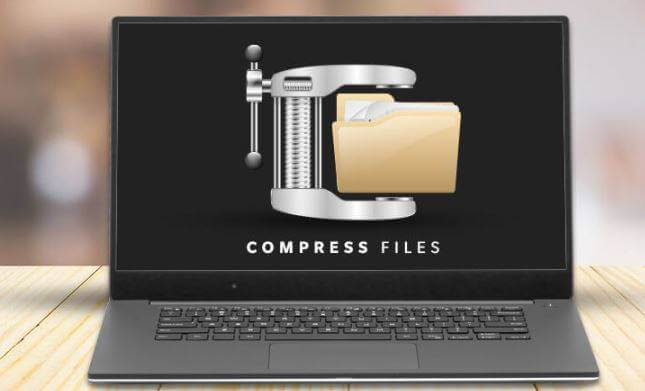To learn how to compress files on a Mac

Compressing files is the best option when you need to transfer them or just have too many on your Mac.
If you’re looking to send large files to someone through email, you can compress them on a Mac. Moreover, maintaining huge documents and audio/video files would unnecessarily increase the pressure on your disc and degrade its efficiency.
Accordingly, you should always compress data before saving it to your Mac. All right, let’s check out how to compress files on a Mac.
How to Compress Macintosh Files and What You Need to Know
It’s important to get a few things straight before we get into Mac file compression:
- ZIP is the default file format for compression and decompression on Macs. It’s widely use since it’s a convenient way to store data online.
- Even though Macs have the fastest CPUs, compressing files can still take a while.
- Additionally, Macs with greater RAM available may compress files more quickly.
- Try out several archive file types and go with the one that lets you reclaim the most storage room.
- Compressing files should not become routine. Simply said, if you compress your file, it will no longer be in a format. That can be easily seen or use on the web.
- File compression, encryption, and password protection are all options. That may be achieves with the help of third-party applications.
Mac OS X: Compressing Documents
If you own a Mac, you can compress files without downloading any additional software. Because Mac OS X already includes a utility to handle file compression and decompression. How to minimize file sizes on a Macintosh
Step 1: Open Finder by clicking its icon on your Mac’s Dock.
Step 2: Choose the files and folders you wish to compress by right-clicking on them while holding down the Control button. In addition, you may just drag the file over with your mouse.
Step 3: From the contextual dropdown menu, select Compress or Compress X Items, depending on for your needs.
Step 4: The newly compressed ZIP file will be in the same folder as the original file.
The name of the original file is carry over into the archive’s ZIP filename. The archived file name will be Archive.zip if you compressed numerous files or directories.
Insights Into Macintosh File Decompression
Would you like to uncompress your files and look at them? On a Mac, decompressing and viewing compressed files is a breeze. Simply double-click on the compressed archive to have it automatically unzipped into a more manageable format.
Alternative Mac File Compression Programs
For archive file formats other than ZIP, which is the only one support by the Mac’s built-in functionality, you will need to obtain third-party software. On a Mac, you may choose from a variety of compression utilities, such as:
Unarchiver
When it comes to third-party applications for compressing and decompressing files on MacOS, Unarchiver is among the most widely use. It’s free, and it has a straightforward and user-friendly UI. Perfectpcserver.com provides you more details about compressing files on Mac. The program can also interpret non-Latin alphabets. It makes an archive file with a name in a script other than Latin that can be opening without any problems.
Not only does it work with ZIP files, but also RAR, TAR, XAR, RPM, DEB, and a few more that aren’t as often used. Furthermore, the software is free and simple to use, making file compression a breeze.
Pros
- This service is provided at no cost.
- Multiple archive file types are support.
- Rapid data compression and set up time.
Cons
- Archives can be better unpack than packed with this tool.
The One in Command
In addition to supporting a wide variety of archive file formats, including ZIP, TBZ, TGZ, 7z, and more, Commander One is a powerful file compression application for Mac. Open the archive normally and copy files without having to extract them.
For comprehensive file and data management, Commander One’s dual-pane interface is unrivalled. Plus, there are three different viewing options for your convenience.
Pros
- Put in place your own shortcut keys.
- Twin windows for simultaneous viewing and quick navigation.
- Accepts a wide variety of archive file types.
- Provides a queue for waiting your turn to while you do file operations.
Cons
- If you want access to more sophisticated features, you’ll have to pay for the pro version.
Keka
Keka is excellent program for compressing files on a Mac. It offers everything you need to archive files, plus a few extras, such the option to break huge archives into sections so that they may be more easily shares. Keka is compatible with a wide variety of compressed file types. To convert files, all you need to do is download the free Keka software, drop them on the app’s Dock icon, and the program will do it for you.
Pros
- This is an AES-256 cypher program.
- Conveniently simple to employ.
- Simple software.
- Gives you the option to split large archives into smaller, more manageable chunks.
- Allows for a variety of file types.
Cons
- A completely functional tool, it is not.
- There are a lot of kinks and problems.
